Laura James: Underwater 360° cameras and Insta360 review
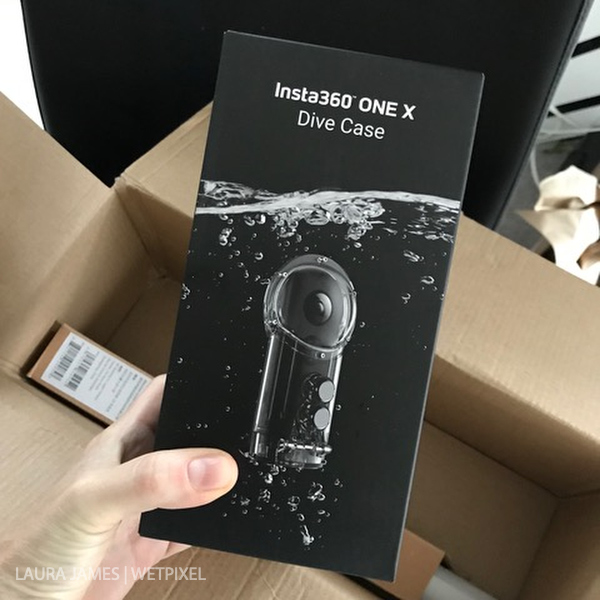
The Insta360 One X
I’ve been a fan of the Insta360 cameras for a while, mostly because they’ve been forward thinking with things like live streaming to Periscope, early attempts with solid in-camera stabilization, fun tropes like bullet time, hyperlapse and general overall ease of use. The image quality in their consumer range has often left something to be desired, and their algorithm makes for some somewhat painfully over-sharpened image quality at times, but overall they’ve continued to improve and bring better and better consumer grade 360° “action cams” to the market. (Not discussing their Pro line here.)
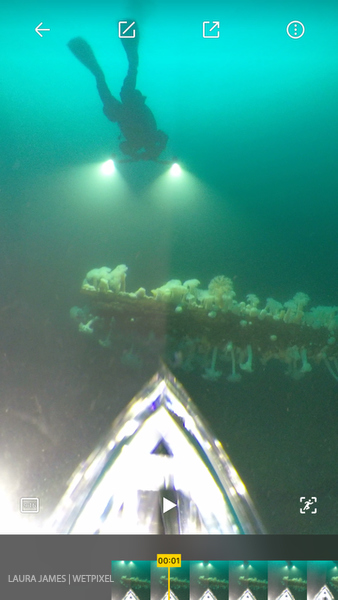
Their attempts at an underwater case, like so many others before them, were not pleasing. I’ve utilized Insta360 cameras underwater but was only able to attain good results in my own DIY double dome housing or in the severely depth limited but commercially available 360bubble.
I did get the little waterproof case for the Insta360 One. I really wanted something that I could mount in a POV position (which meant that I wanted a small consumer camera) for the transition between surface and underwater. Results? Boo. It’s a splash housing at best, it interfered with the stitch AND it had painfully soft focus, turning fish and kelp into blobs. I guess that is one way to deal with an imperfect stitch?
I also got the commercially available housing for the GoPro Fusion (did I mention being ever the optimist?) Results as expected were equally blurry and unstitchable.

So when Insta360 released news of a new purpose-built consumer grade dive housing for the Insta360 One X, as usual, my interest was piqued. The topside image quality coming from the camera looked to be vastly improved over the Insta360 One, less magenta fringing and the in-camera stabilization appeared to be giving GoPro Fusion a run for its money (meaning a camera ~1/2 the weight of the fusion for flying on the Mavic Pro) But what would that mean for their newest underwater offering? Did they bring someone to the table with Underwater experience? Did they read Eric Cheng’s post on how cameras focus on dome ports underwater?
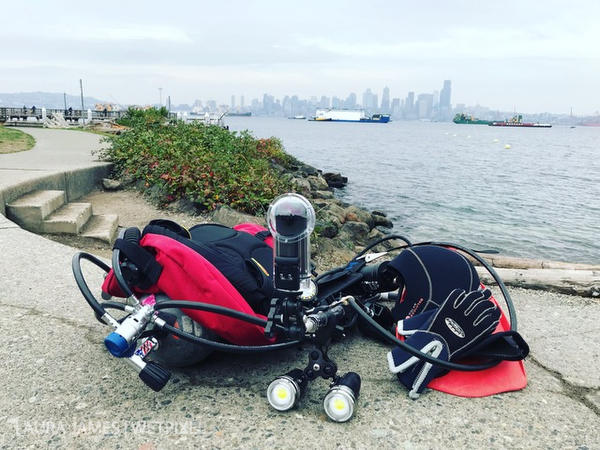
Upon seeing images of their design, complete with real “mini-domes” curiosity got the better of me and I ordered a camera and housing from the Insta360 Online store. Delivery time was quite prompt, I placed my order on a Thursday and everything arrived on my doorstep by Monday.

First impressions of the housing were decent. Noting the design I was skeptical of the nadir but the mini-domes looked good. It’s super straightforward to insert the camera into the housing. At first, I was worried about the backs of the buttons scratching the lens but so far that fear seems to be unwarranted.
I generally don’t use moisture munchers or absorbent pads in my housings. If I put my system together and seal it up before I get to the dive I tend to have minimal fogging issues. I find that especially with these small consumer housings that if placed wrong they can distort the plastic just enough to allow flooding and/or if you are not super careful a corner can get caught in the sealing o-ring. If you are the type who used them regularly, never fear, Insta360 has you covered and the housing comes with a handful of them.
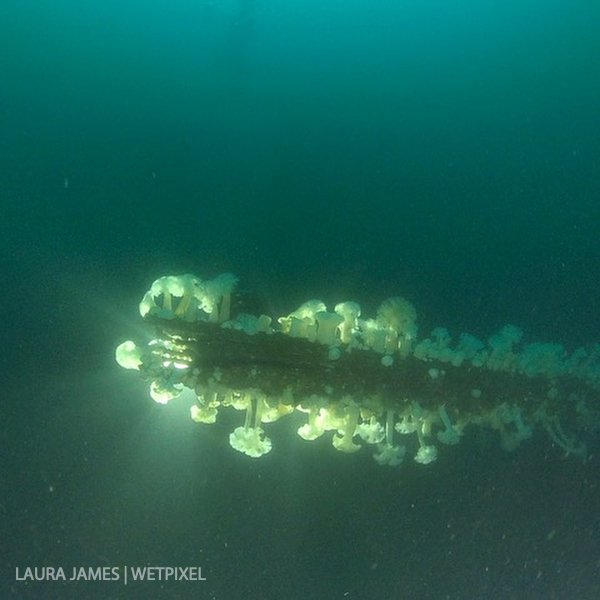
First in water test results:
Utilizing the iOS app with the “correct for dive housing” toggle, the underwater stitch is impressive, its the best I’ve seen out of a consumer grade housing by far. iOS exports are limited to 4k maximum. Unfortunately, the desktop app is still in beta and severely limiting and at the time of writing does not have the correction option so if you want full 5.7k footage you will suffer stitch line errors.
The footage itself looks beautiful. Super clean, super crisp, solid low light performance, nicely done!

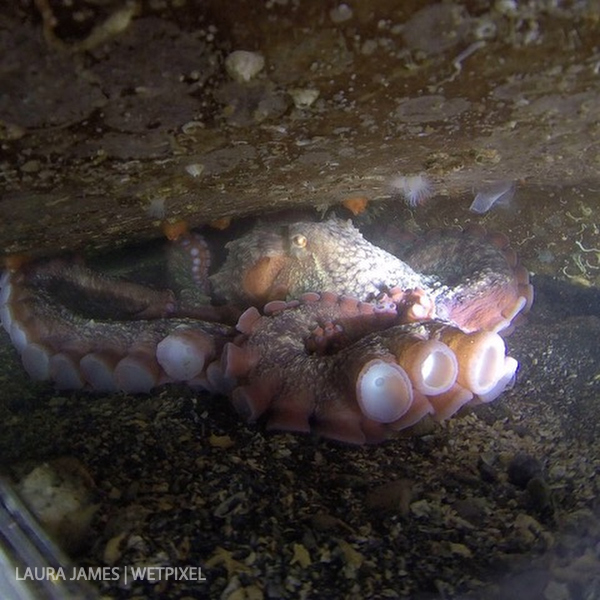
The housing is tiny comparatively, I was able to tuck it into an octopus den that would have been otherwise impossible to shoot in 360. The housing is slightly positively buoyant in salt water (which is how I like them) and trims out perfectly with mounting hardware.
Before you get too excited though…
That Nadir.
Ouch.
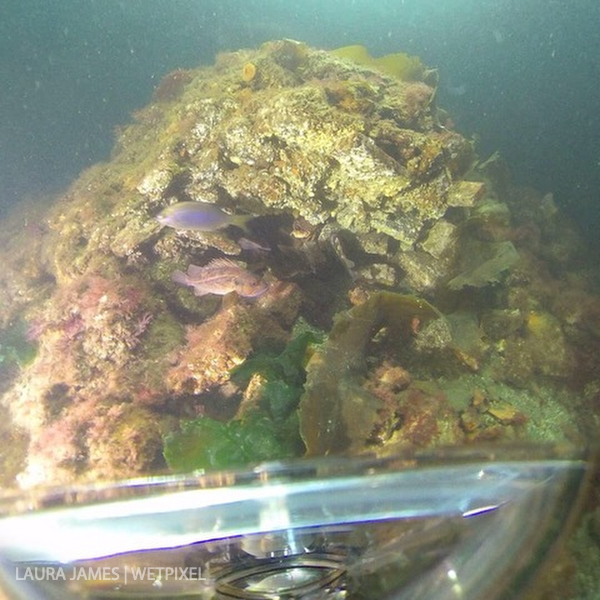
What could have been a solid contender for prosumer and b-roll professionally usable monoscopic underwater 360 was totally blown by the massive patch needed to cover the base of the camera visible in the nadir. I tried it a few different orientations and although usable and totally fun for consumer grade footage for your diving home movie, the only way it can be readily used as prosumer camera is probably in a static placement with enough care in positioning that you’ll be able to patch the base out of the shot or for swimming if you make sure to keep the diver above and behind in the water column so they can be cleanly patched out in post.
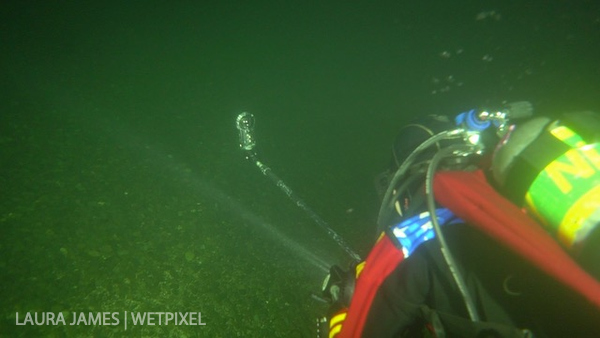
For static single subject shot (like the octopus) I’ll still make sure to face one camera ‘eye’ directly at the point of interest. For more dynamic footage such as swimming or scootering fun, running it parallel to the pole and with the stitch line vertical (as opposed to bisecting the horizon) or if you want a slight angle then you’d run the stitch line with the horizon (these recommendations are based on the size of the housing base visible in the nadir). The corrected stitch is good enough for either of these options.
Now, to address the multitude of comments from the forums basically saying “WTH Insta360, you should make a purpose-built camera that has a sub $100 housing that stitches perfectly and has perfect nadir/zenith.
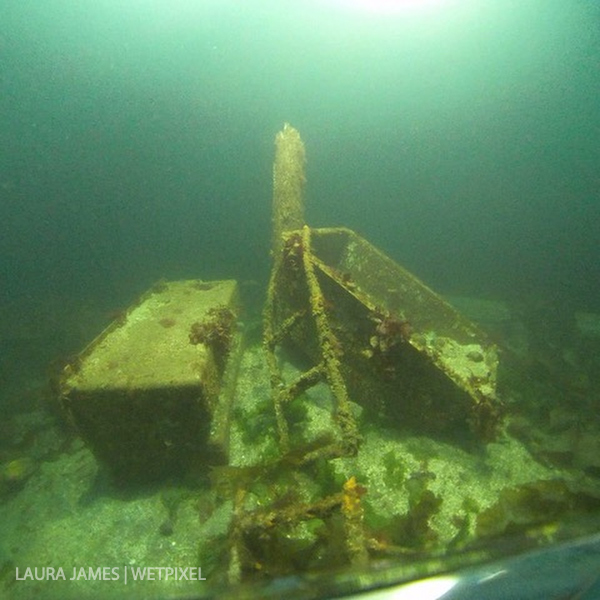
This camera does not suck. This housing does not suck. I don’t think you are going to find what you want (Champaign on a seltzer water budget) in this price range. $488 gets you a crisp focusing underwater 360 camera system. This is not a “pro” system, nor was it ever meant to be.
Look at the other housing options that offer mostly clean stitch and crisp focus:
- The Ricoh Theta S housing has a visible base
- The 360bubble has a visible base
Both of these options are more expensive, but I don’t see the same blast of negativity. I feel a bit like folks need to check some entitlement at the door. Underwater housings for 360° cameras are challenging, underwater housings that focus, don’t leak when you take your camera to 130’, and have CAMERA CONTROL, well… 10 fold challenge.
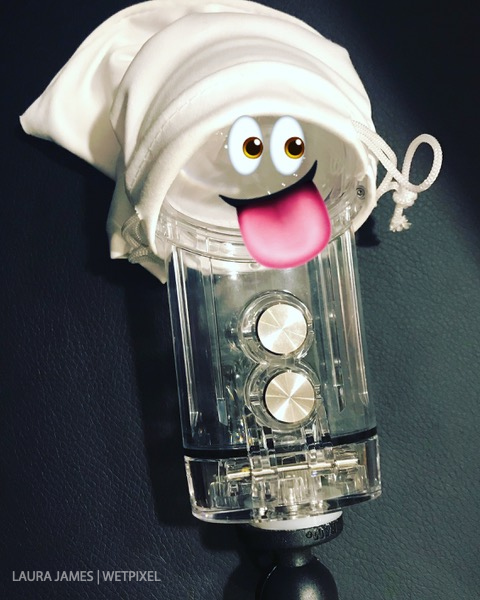
So, in conclusion, this is a great little camera and housing. If you are looking for a professional grade system you will likely be very disenchanted by the nadir patch needed. If you are looking for a really fun way to capture your next diving vacation and don’t care about the housing base or will use free capture most of the time (never miss a shot!) for sharing a flat video from 360, I think you will be quite happy with the Insta360 One X in the Dive housing.
About the Author
Laura is a two time Emmy® award-winning filmmaker with a passion for sharing the natural world.
Crafting environmental education videos for clients large and small, over the past decade, Laura has worked tirelessly to support local non-profits, local small businesses, and small indy productions. An example of this partnership is her work over the past 4 years with Sustainability Ambassadors helping create and grow their Sustainability Talks library to over 100 videos.
Not limited to standard video, Laura has expanded her skill set, becoming adept at filming 360 “Spherical” video both underwater and on the surface. Her hope is this new medium will further immerse the viewer in the oceans, helping build knowledge, awareness, and love for our blue planet. It is also her hope to promote the use of 360 video in education for schools to help engagement and focus.
Based on her personal experience caring for her father and visiting elder care facilities, Laura has also become a passionate advocate for the use of 360 video and VR in the healthcare setting.
Northwest Regional Emmy Award 2014 “Solving the Mystery of Dying Starfish”
Northwest Regional Emmy Award 2013 “Quest: Sea Otters Save the World from Climate Change”
To see more of Laura’s work, please check out her Vimeo page or website.